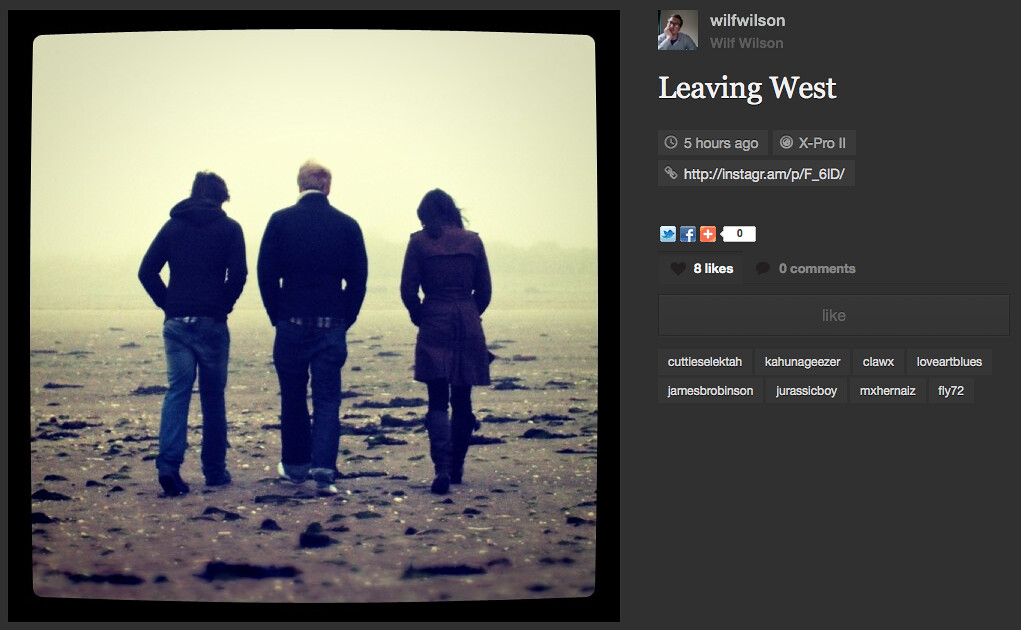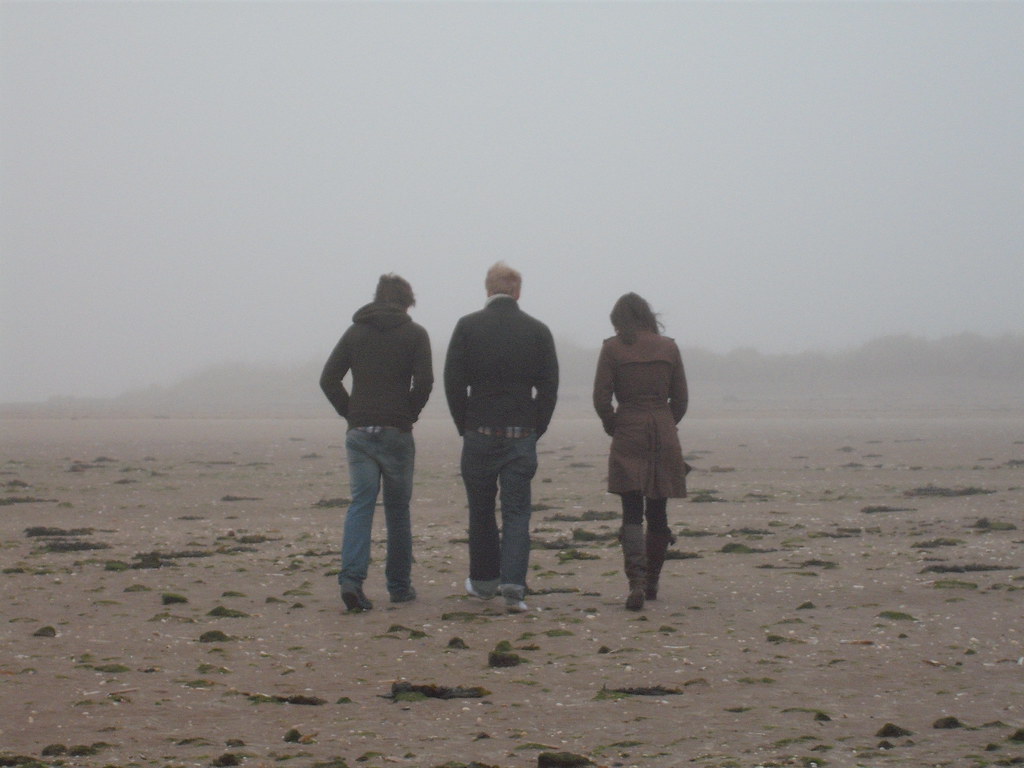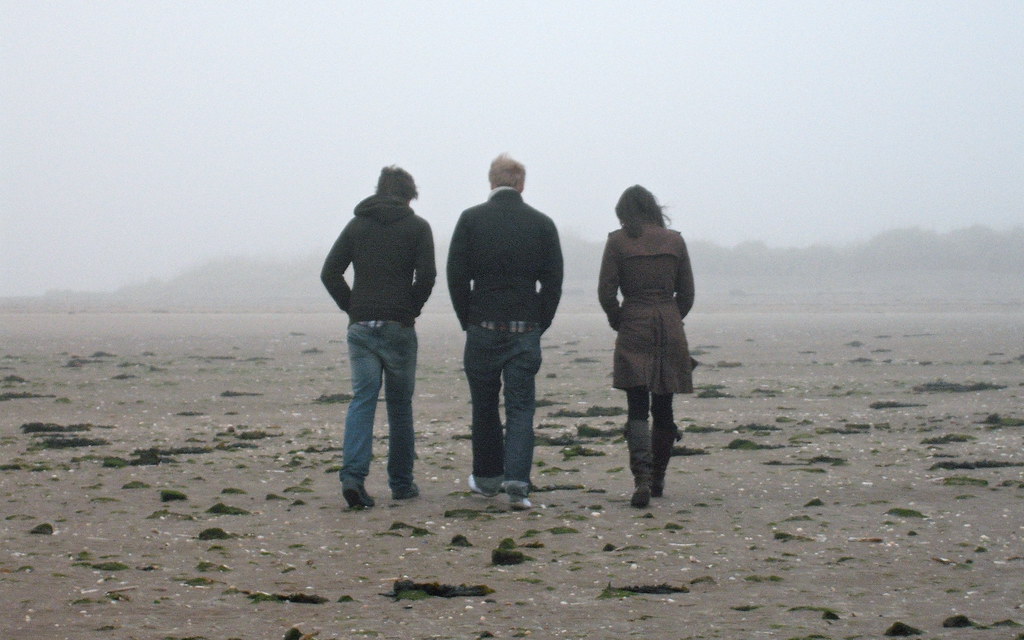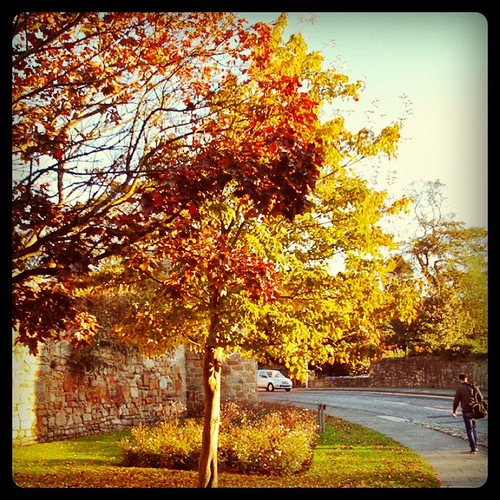I started using Instagram several months ago. The homepage describes itself as a “fast, beautiful and fun way to share your life with friends through a series of pictures”. I’d say that’s accurate. Essentially, it’s a social photo-sharing network which exists primarily within an iPhone app ((Currently there is no iPad-optimised version of Instagram. iPod touches can run the app fine too, even if there is no camera on the device.)).
For me, this isolation of the network is the most interesting aspect to Instagram. It gives it a small-community feeling, unique for such a large and popular service ((The description in the App Store claims 3.75 million users.)), whilst at the same time it provides an insight into the company’s philosophy and future.
Twitter and Facebook are all about getting you connected wherever you are, no matter what hardware you are using. With Instagram, almost everything takes place within the sole iOS app: creating an account, finding friends, selecting or taking pictures, applying filters and editing, adding photo meta-data and uploading images. The homepage for instagr.am, far from being the hub of the service as with Twitter and Facebook, merely describes the app in a few lines and links to the App Store where it is available for download ((Actually, you can also edit some of your account details on the website. That’s it.)).
I first heard of Instagram when posts appeared in my Twitter feed consisting of a short bit of text along with a link to an Instagram picture. I could view the image but do nothing with it. How was this any different from Twitpic with fancy filters applied, and why have loads of people suddenly started using it? It took me a while to realise that there was a social network behind it, with friends and interaction. None of that is immediately obvious ((Or at least, none of that was obvious at the time. The website has since changed design to show more information more clearly.)) when following a link from Twitter.
You can link to Instagram photos, by the way. It’s not entirely secluded. Of course you can ((There are many links to my Instagram photos in this very post.)). This morning I uploaded a photo to Instagram. Anyone who follows me on Instagram would have seen it in their feed, and I also chose to publicise my photo on Twitter and Tumblr.
The link that was generated is http://instagr.am/p/F_6lD/. This is how it looks in the app:

Here’s how it looks on Twitter, with the image displayed inline:
And here’s how it looks on a website called Inkstagram:
Inkstagram is an independent website which gives you access to a small number of Instagram’s features through your web browser. It uses Instagram’s API, and it’s the reason I used the word ‘primarily’ in the first paragraph: “[Instagram] exists primarily within an iPhone app”. Websites like Inkstagram are the exception to which I was alluding.
On the website, you can see your feed ((That is, the photos of the friends that you follow.)), ‘like’ and comment on photos, follow and unfollow people, and see your own photos and followers, amongst a few other features. This is a very useful capability for me, particularly when I’m at university where Wi-Fi is not always available, rendering my iPod touch and the app useless.
The crucial limitation is that you can’t upload photos through the website. What’s more, if you go to Inkstagram.com you will be presented with a log-in screen. You still need an Instagram account to use the website, even if you just want to browse, and the only way to create one is inside the iOS app. All that someone without an account will ever see of Instagram is a page with a single, non-interactive photo. You don’t use iOS? Sorry mate.
Why would Instagram make their social network so isolated?
Isn’t the web about openness and interoperability and, most importantly, linking? Yes, that’s how most people see the web, but that doesn’t mean it’s the right approach for every situation. Instagram’s approach has it advantages, just as does living in a gated community. A gated community of iPhone and iPod touch users, people with style, people who spend hours every day using iOS, people who care about quality, and people and don’t care if they can’t use the service from a browser.
At any rate, it doesn’t seem to have stopped Instagram from becoming very popular amongst the nerds.
Surely, though, Instagram’s goal is to increase their userbase. The app is free ((It’s one of those apps that I’d be happy to pay for, like Instapaper. Is there something about Insta* names that makes them great for apps?)), and there are no ads whatsoever. They have no income. Like any start-up, then, their initial goal must be to increase their numbers of users.
From their FAQ ((Read it all – it will only take a minute and you might learn something.)):
Who are your investors?
We raised a $500,000 seed round from Andreessen-Horowitz and Baseline Ventures.
How will you make money?
We believe that the core of our product will always be free. There will be opportunities for consumers to buy extra add-ons like special filters, etc. However, we plan to experiment with different models as we grow and learn what special value we can provide to the community to make their collective experience more engaging, exciting and useful.
Wouldn’t an increase be best achieved by making Instagram available on more platforms? It’s obvious that they’re trying to grow, but I think they want to gain users not by making it easier for people to join ((That is, by spreading to other platforms.)), but by making a first-class app that people want to use. If you build a great app, users will come. I think that Instagram feels that they can’t maintain their standards if they diversify this early. They’ll end up spread too thinly, stretched too far. They pretty much admit this in their FAQ:
When are you going to make the app for blackberry, android, etc?
We are currently working on making the iPhone experience as solid as possible. Only then will we consider other platforms, but currently we have nothing to announce.
This reminds me of Apple.
So Instagram is an unusually closed network for the time, but photos can still be shared and their user-base is growing.
What, then, do I think of Instagram, and how do I use it?
I think Instagram is fun, but I’m not a typical user. I’m not using it in the intended fashion.
From the FAQ, again:
We’re building the platform to allow you to experience moments in your friends’ lives through pictures as they happen.
It’s clear that the creators intend Instagram to be used spontaneously: take a photo, tweak it, and share it with your friends… and the world. Yet I can’t use it this way. I use Instagram from my iPod touch.
It’s a second-generation iPod touch… It has no camera.
An alternative method is acknowledged in the FAQ:
Can I process and share photos from my camera roll?
Absolutely. You can either take photos from within the app or choose from your library.
This is how I use Instagram. The only sensible way that I can get photos onto my iPod is through my computer when I sync my iPod. For me, this means that an Instagram post can never be spur-of-the-moment ((It also means my photos will not be properly geo-tagged.)). Perhaps I’ll get an iPhone one day, maybe even quite soon, but for now I’m stuck with my iPod and uploading pre-selected photos from my library.
I use iPhoto to manage and edit my photos. I take photos with a cheap compact camera ((£50 from Tesco.)), and upload them to iPhoto soon after I’ve taken them. I rate my favourite photos, and I have a ‘smart album’ which includes all photos rated 4 or 5 stars, and it syncs automatically with my iPod.
Then, whenever I feel like it, I can select a photo from my iPod’s photo library and upload it to Instagram. So far I’ve put 10 photos up. They’re all included in this post at various points.
How about the photo that I added to Instagram this morning? It’s from an afternoon March 2010, when I went to St Andrews with both of my brothers and one of their girlfriends. The weather was misty and cold. Normally I find that depressing, but that day I found it magical, akin to the feeling of being in an empty field in the middle of a snowy evening, cut off from the rest of the world in an eerie no-man’s-land. We were at the end of West Sands, and it was low tide. We’d walked far enough from the dunes that they were lost in the mist, but not close enough to the shore to see the sea. All around us was flat sand and the blanket of mist like falling snow. There was nothing but the low roar of the winter sea and us. It was special.
When we decided to head home, I briefly lingered and took a photograph to capture the moment – or at least try.
This is the raw image as it came off my camera, a Fujifilm A860:
Not awful, if I may say so myself. This is it after a slight bit of editing ((Crop, increase black point, change the colours a bit – that kind of thing.)) in iPhoto. It’s the version that I posted to my wall on Facebook, and how it would have been sent to my iPod:
The process of uploading a photo to Instagram is really simple, provided the app doesn’t crash ((It hasn’t done so for a little while, but it used to quite often.)). After loading the app, I tapped the middle button of the black navigation bar at the bottom of the screen. It’s called “Share”. I selected the above photo from my library and proceeded to the editing screen.
First you have to crop the image. You may have noticed that all Instagram photos are square. This is required and it can be a problem for me when it comes to selecting a photo, as I always compose with 16:10 ((“Widescreen”.)) in mind, or 4:3 at the very squarest ((In certain circumstances, and always when shooting in portrait orientation.)).
Next: the tilt-shift feature. It’s a fairly recent addition to the app, added a few versions ago. It variably blurs the photo to decrease its depth of field ((Thanks for the correction, Jonathan.)). Sometimes it works well, sometimes it doesn’t. I added a slight tilt-shift to make the sand at the bottom appear out of focus. It was the first time that I’ve applied a tilt-shift and not instantly removed it – I think it effectively and tastefully increases the feel of this photo.
Then comes what I believe is the most controversial part of Instagram: the addition of filters. Merlin’s not a fan, for one. They can appear gaudy and to begin with I thought they were all cheesy. Yet they’ve grown on me, and I think they can often add to a photo, such as in this case. Instagram’s reasoning behind the filters:
Mobile photos always come out looking so-so. We set out to create some awesome looking filters to transform your photos into professional-looking snapshots.
Fair enough. Here, I applied the filter called “X-Pro II”, but I could just as well have chosen to upload without a filter applied. I’ve done that before.
After that, you add meta-data such as a title and location, upload and publish, and wait for the likes and comments to roll in. That’s it.
Instagram saves a 612×612-pixel copy of the finished picture in your photo library, leaving the original untouched:
I’m really pleased with how it turned out. It’s one of my favourites. It received 8 ‘likes’ ((I’m not usually obsessed with this kind of datum.)).
I have an interesting status in the Instagram community.
After figuring out what it was, I downloaded Instagram last year ((I think it was at the beginning of November when I was home for Reading Week.)) and played around with it a little, and then I uploaded my first image.
I forgot about the app and didn’t return to it until March, about 4 months later. When I eventually launched the app again, I was astonished to find that, despite having followed no one, and having uploaded only a single photo, I had 1624 followers. They weren’t even bots – the followers that I checked out all seemed to have legitimate accounts.
1624 people had decided that they enjoyed my first photo so much that they wanted to see more! It was really exciting.
For context, at the time I took some screenshots of the profiles of some of my internet heroes, ones who already had an internet following when they started to use Instagram:




I had the same sort of following as some of these awesome guys! I know it’s a childish thing to think about, but I still found it cool. These screenshots were from a couple of months ago now, though: they’ve all far surpassed my count now.
How did this happen? I’m not sure, but I can speculate: maybe my photo, for whatever reason, was featured in the “Popular” tab of the Instagram app. Unfortunately I have no way of finding out if it was. I’ve also searched Google using the URL of the relevant photo to see if I was linked to on the web, but judging by the results I don’t think it was.
What I find funny, is that after publishing my 9 subsequent photos, I’ve lost followers every single time. Please don’t get me wrong: I don’t care, it’s just weird. Merlin noticed a similar thing when he took a hiatus from Twitter: for every day that he didn’t post, his follower count increased. People are happy to follow you if it involves doing nothing, but once you start putting out new and different stuff, people aren’t so keen. Maybe you aren’t who they thought you were, or they don’t have the time to keep up. Whatever.
It seems like a paradox: the less you post, the more followers you get.
Something caused people to decide to follow me after publishing the sunrise photo, and for that I am proud. I must have done something right.
My most popular photo, with 13 likes, is the second one that I uploaded, taken on the pier in St Andrews. It’s strangely and disgustingly addictive seeing all of these random strangers telling you that they like your stuff:

It feels strange having a significant following, that’s all I’ll say. I suppose there’s nothing else to say. It’s not as if it made me rich or even made more people aware of me or my website. That’s OK.
I do have one friend on Instagram who I know in real life: Jonathan, my French computer science friend from university. His username is rustycarbon and I think you should follow him. Here’s one of his photos. He uses Instagram much more in the way that it’s intended that I do. He has 9 followers.
I’m getting into photography more and more every day ((Please let me know if I start getting pretentious though, will you?)), and Instagram is part of the reason. I think that you should try it out if you can.
My username is wilfwilson.
UPDATE: I should have mentioned and made more of this in the post, but a lot of people don’t like Instagram. Kottke recently said on Twitter: “Every single thing I’ve read on the topic of “why Instagram works” is wrong.” I don’t know if Instagram will last. I don’t know if it’s going in the right direction. But for now, it’s a bit of fun and I enjoy it.























looks gay as fuck btw
You suck horse dick
Is there any way to add the location of a pic after you have posted it, say a week later?
Cheers.
I’m pretty sure there’s no way to do that, unfortunately. I think you just have to make sure you get it right straight away.
Wilf, thank you for explaining how to use this with a non-camera iPod touch, which is what I have.
I’m glad it helped.